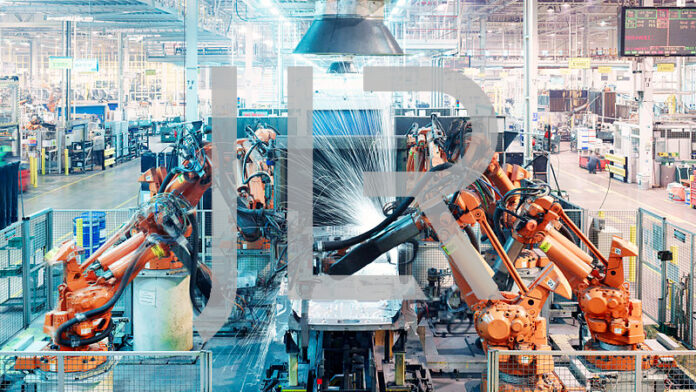British car maker Jaguar Land Rover has deployed a private 5G network from Swedish vendor Ericsson – with help from the UK integrator arm of Japanese IT firm Fujitsu. Ericsson invited both companies on stage at its pe-MWC analyst event in London today (February 12), where it led a nine-session agenda, over four hours, with at least four sessions on its enterprise 5G strategy, covering private and neutral-host networks, crossing also into network APIs for enterprises.
Åsa Tamsons, in charge of enterprise solutions at Ericsson, trailed their introduction with a catalogue of Ericsson’s (fairly) recent private 5G wins, including for supply-chain delivery outfit CJ Logistics in South Korea (2023), industrial machine maker Toyota Material Handling (2023/24) in the US, engineer manufacturer Cummins (2024) in the US, and catamaran race competition Sail GP at around a dozen coastal sites around the world (2025).
Some notable highlights from these private 5G deployments: Toyota Material Handling has seen zero downtime on its 5G network since it went into its 200,000 square-foot factory two years ago, and CJ Logistics, continuing to scale the deployment, has seen a 15 percent uplift in its existing operations (however that is measured). Meanwhile, Cummins is “innovating with computer vision” in co-creation with Ericsson, and also Verizon (and the ‘prime’ on the deal).
Tamsons said Ericsson, which has just announced US system integrator Future Technologies as one of three new ‘scaling partners’ (the others are to be confirmed), has ramped up its focus in enterprise channels since reorganising its Cradlepoint business at the start of 2024. Tamsons said in London: “We want to be a great partner within the ecosystem… [For us] it is not about how many partners, but how to make them successful – both carriers and industrial [specialists].
She said: “We want to be the default choice for any organisation that needs secure infrastructure… Wireless [cellular technology] today is not just flexible and agile but secure and reliable. Which was not the case a couple of years back (really prior to Release-16 level 5G SA). It is also infra-less… [and there is the opportunity for enterprises to] replace legacy [technology] to be more agile, and to meet customers where they are.”
She said other stuff, too – which, time permitting, may be (properly) reported. But the real hook is her company’s work with Jaguar Land Rover, via its channel partner Fujitsu. It turns out, the team Jaguar Land Rover had been struggling a couple of years ago to optimise its industrial Wi-Fi and ethernet infrastructure at its manufacturing facility in Solihull near Birmingham (where it produces the Range Rover Sport) to cope with all the new IoT sensors and cameras coming onto its site.
And then Stephen Mason, advanced technologies manager for industrial operations at Jaguar Land Rover, visited Hannover Messe with colleagues, and saw private 5G solutions from the likes of Nokia and Siemens, and its problems were solved. Except that it chose Ericsson; or rather, perhaps, Fujitsu chose Ericsson. Either way, the deployment at Solihul, connecting black-spots and not-spots in body-shops and paint-shops in a big metal box, has been a revelation, it seems.
Mason said in London: “We had a whole host of issues [with unreliable Wi-Fi and inflexible ethernet], and we didn’t know what the answer was. And then, at Hannover Messe a couple of years ago, there were all these large 5G signs – and not just from the telcos, but from Siemens and industrial players. And [the penny dropped and we thought] maybe we could fix the problem. So we did a proof, to see if it would penetrate a [concrete and steel] box, and it was successful.”
Indeed, it worked better than anyone expected, he explained – coverage everywhere, going to about 900Mbps, and holding-up where Wi-Fi switchovers had failed its new Industry 4.0 operations, and where ethernet just couldn’t go. This has included coverage in its five-floor paint shop, which had been completely disconnected previously – where data was locked into static computers in industrial machines. His comments will make a separate piece – when time allows.
But for reference: the deployment uses the n77 band (at 3.8-4.2 GHz) in the UK, licensed by Jaguar Land Rover itself. The anchor case was condition monitoring, but is multiplying quickly, such as into first-time connectivity in siloed paint-shops. Its parallel plant in Slovakia will likely ape the setup, except in a tranche of local operator-leased spectrum.
Next to him, Kevin Hill, sales executive for networks and technology at Fujitsu, said: “It is a very exciting time. We have gone through the IoT curve, where adoption is now happening. And 5G is really foundational technology, which will change how businesses work – going from Industry 3.0 to Industry 4.0. The conversation [has been elevated] to the boardroom in enterprises now. Proofs and pilots will turn into fully-fledged deployments in the next 12 months in the UK.”
More to follow.

